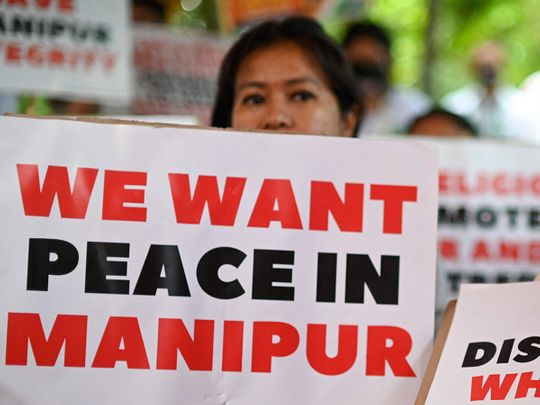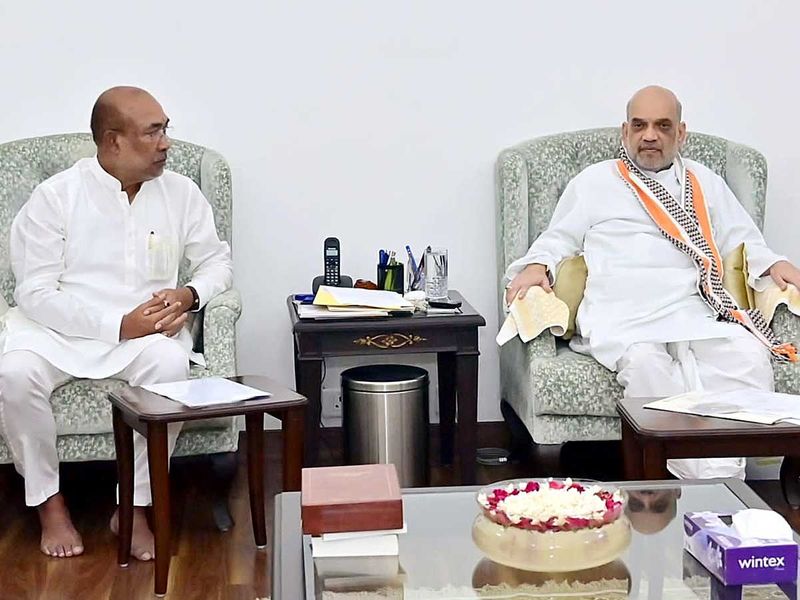
The images of two Kuki women being paraded without clothes and sexually assaulted by a mob in Manipur, India, has stunned everyone.
The violent conflict between majority Meitei community and minority Kuki community has been ongoing for nearly three months, killing more than 150 people mostly Kukis, displacing more than 60,000 of them, and destroying nearly 400 their places of worship.
Armed conflicts have ravaged societies throughout history, leaving behind a trail of destruction and untold suffering. Amid the chaos and violence, as we witness in Manipur, women often find themselves at the forefront of victimhood.
Whether it is in the context of war, insurgency, terrorism, or civil unrest, women continue to bear the brunt of armed conflicts in unique and disproportionate ways. One of the most disturbing aspects of conflicts is the use of sexual violence as a weapon of war.
Not an isolated event
What is happening in Manipur is despicable but not an isolated event. Throughout history, women have been subjected to rape, sexual slavery, and other forms of gender-based violence during times of conflict. Perpetrators often use sexual violence as a tool to demoralise communities, exert control, and assert dominance over the enemy.
The trauma inflicted on women is not limited to the physical aspect but also extends to deep psychological scars that can last a lifetime. Instances of such violence in armed conflicts have been documented in various parts of the world, from Rwanda to Bosnia and Herzegovina to the Democratic Republic of Congo and beyond.
Despite international efforts to condemn such heinous acts, the scale of sexual violence remains alarmingly high, as women continue to be the primary targets of these atrocities.
Armed conflicts frequently lead to mass displacements, leaving communities uprooted and vulnerable. Women are particularly affected by forced migration, as they face distinct challenges in refugee camps and displacement centres.
Often, women find themselves responsible for the well-being of their families, even as they lack access to necessities such as clean water, food, and health care. Displaced women, whether they live in refugee camps or IDP accommodations, are exposed to increased risks of exploitation, human trafficking, and abuse.

Conflict resolution and peacebuilding
In these uncertain environments, their safety is compromised, and their rights are frequently overlooked. The lack of proper gender-sensitive policies and inadequate protection mechanisms exacerbate their vulnerability, perpetuating a cycle of victimisation.
In times of armed conflict, the socioeconomic fabric of communities undergoes severe disruption. Women, who may already face pre-existing gender inequalities, bear the brunt of this disruption. They are often excluded from decision-making processes, relegated to traditional gender roles, and denied access to education and economic opportunities.
The United Nations has been at the forefront of efforts to protect women from armed conflict and address the gender-specific impact of strife and violence. Over the years, several key initiatives and resolutions have been adopted to promote the rights and security of women in conflict zones.
The UN Security Council Resolution 1325 (2000) was the first of its kind to recognise the disproportionate impact of armed conflict on women and highlight the crucial role of women in conflict resolution and peacebuilding. Resolution 1325 emphasises the need to protect women and girls from gender-based violence during conflicts and to address their specific needs in humanitarian responses.

Preventing future conflicts
Building on Resolution 1325, the UN has developed a comprehensive Women, Peace, and Security Agenda. This agenda aims to promote the participation of women in all aspects of conflict prevention, peace negotiations, peacekeeping, and peacebuilding efforts.
Despite these efforts challenges remain in fully implementing and achieving the objectives of the Women, Peace, and Security Agenda. There is a need for stronger political will, continued advocacy, and strengthened partnerships between multilateral organisations, governments, civil society organisations, and local communities to effectively protect women from armed conflict and create lasting peace in conflict-affected regions.
The plight of women as victims of armed conflict is a stark reminder of the horrors that violence inflicts on the most vulnerable members of society. The use of sexual violence as a weapon, displacement and humanitarian crises, and socioeconomic marginalisation continue to undermine the safety and dignity of women in conflict zones worldwide.
Empowering women, protecting their rights, and promoting gender equality are essential components of building sustainable peace and preventing future conflicts.
We must remember that the liberation of women from victimhood is not just a women’s issue; it is a collective responsibility that societies, governments, and international partners must embrace.
Only through collective action can we create a world — and a Manipur — where women are no longer disproportionately and devastatingly affected by the scourge of armed conflicts.









